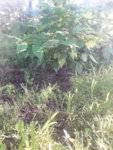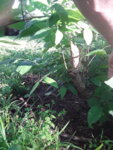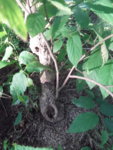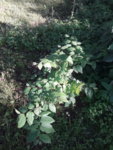RobT1977
Seedling
This Celtis Occidentalis( hackberry) i had in my back yard was near six feet last spring, i trunk chopped it about 18" ...fertilized it early spring this year, and i think im gonna have a pretty cool tree to work with. I dont know if its truly Yamadori since i found it in my yard, but its close enough. ANY THOUGHTS ON DEFOLIATING TO MINIATURIZE LEAVES? I think i will wait a year or two to develop branch thickness, but this is just a guess . .ADVICE WELCOME!!










